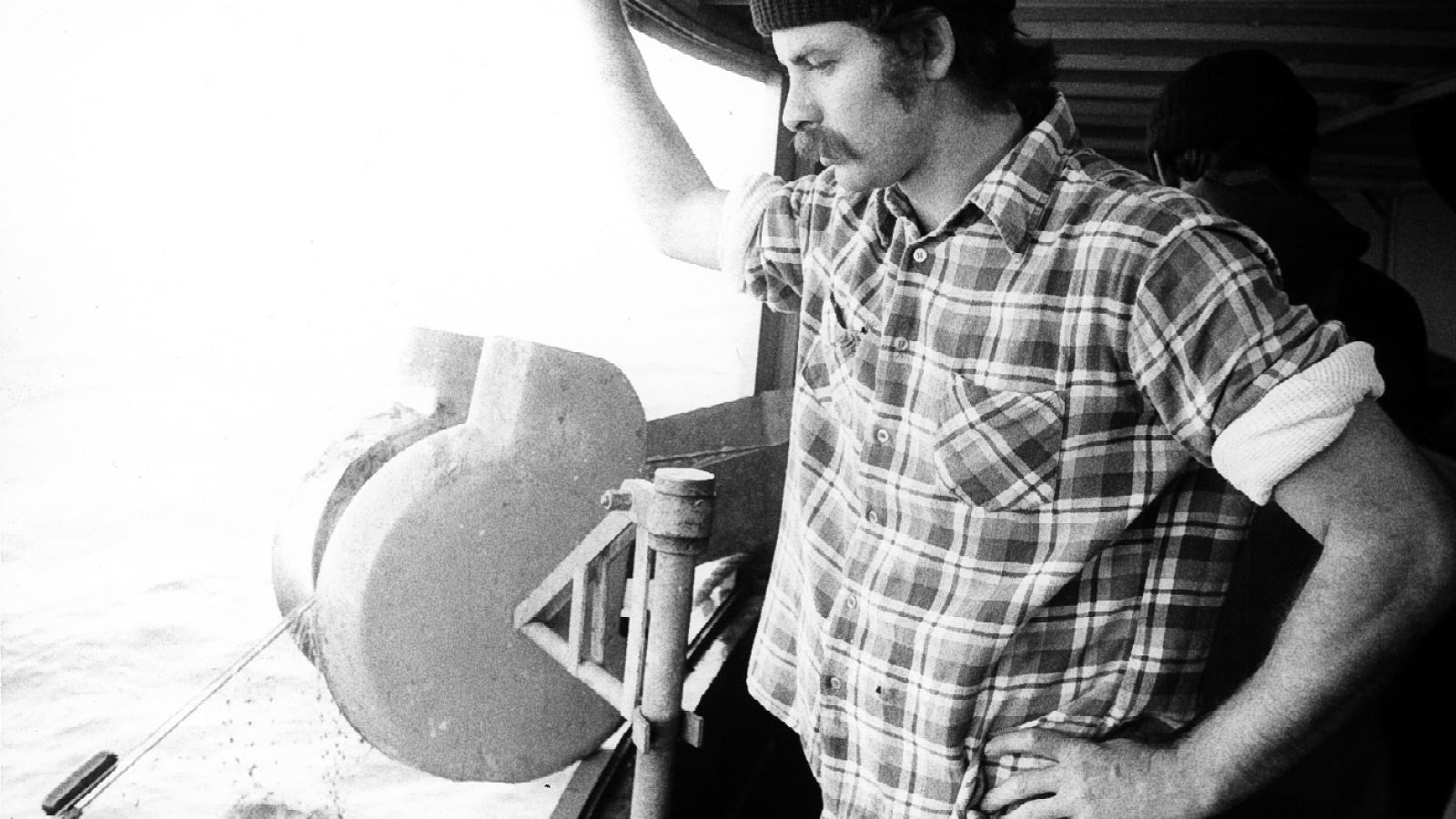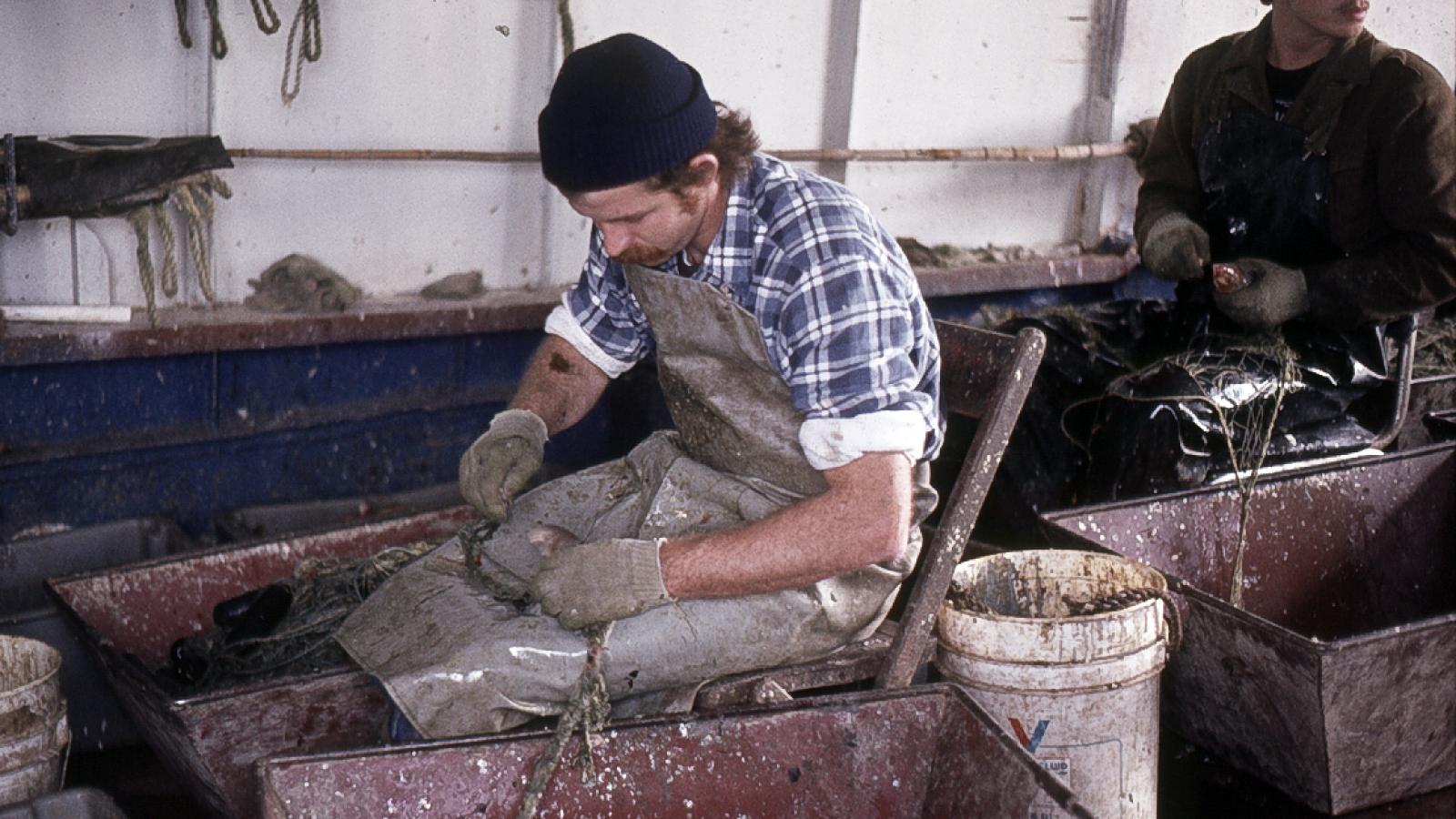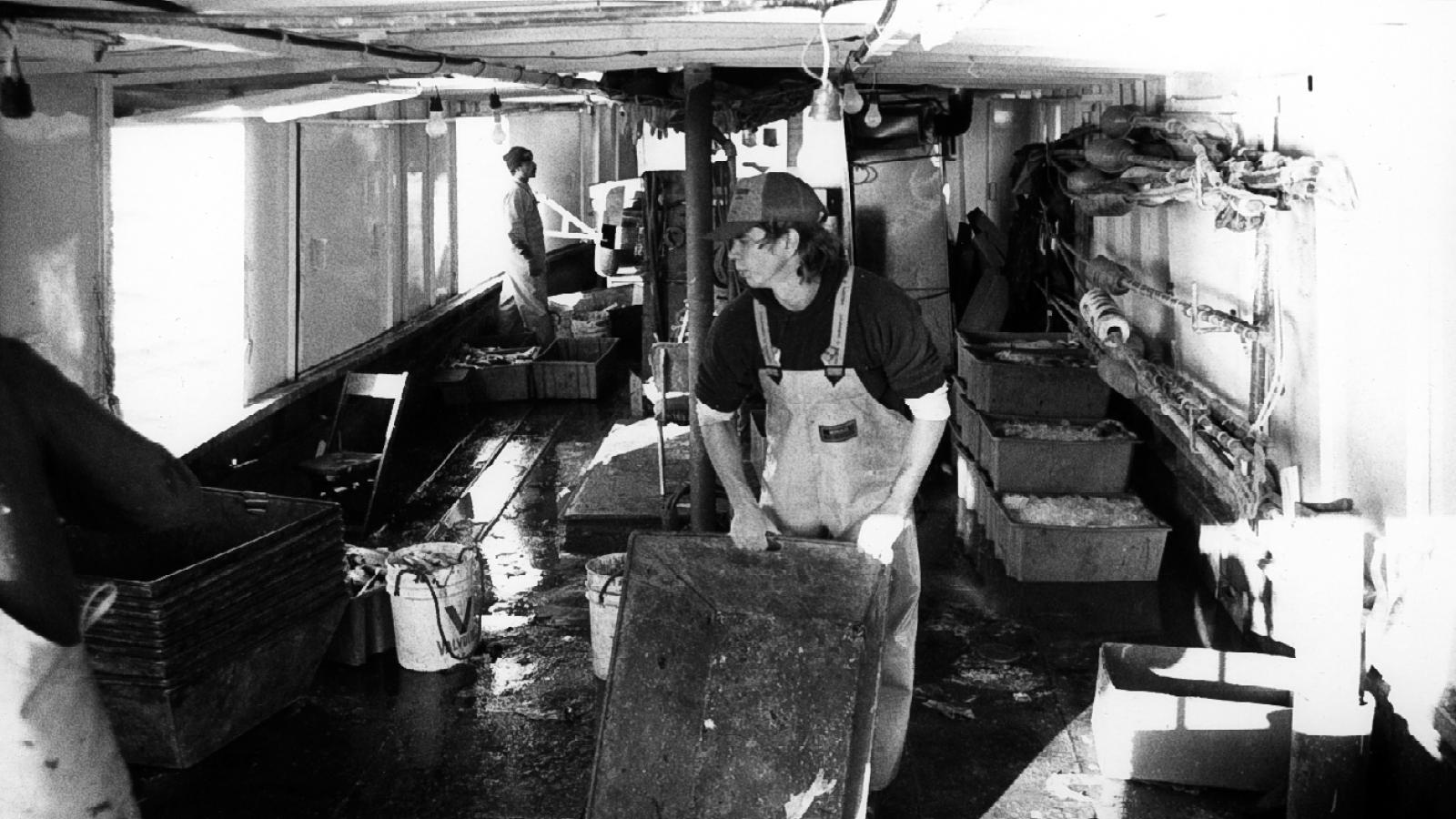At the beginning of our fieldwork, Ohio gill-netting was limited, by law, to those sections of the American Lake east of the Vermilion River mouth, and the only three remaining gill-net ports were Vermilion, Cleveland and, just west of the Ohio-Pennsylvania border, Conneaut. In 1984, gill-netting was prohibited, period. A single gill net is roughly 6 feet high and 50 feet long, although a number of nets may be set end to end. They are made of very thin nylon mesh, which is translucent and thus more or less invisible to fish. Set, again, at a right angle to the presumed path of fish, the gill net catches fish as they swin through it and are caught by their gills in the mesh. Although there are legal limits to the size of the mesh, there is some leeway so that fishermen can adjust mesh size to the species of fish they seek. Gill nets are set either on the Lake bottom or closer to the surface, depending on the traveling habits of fish species in different areas of the Lake at different times.
The gill net is pulled into the boat by means of a motorized pulley set inside an open port at the front of the boat. Once inside, the nets are piled into boxes and the hands remove the fish, one by one, from the net. Free of fish, the nets are then sent back out via a similar pulley set inside the stern. Unlike trap net boats, gill net “tugs" (as they are often called) are completely enclosed, so that the time-consuming work of removing fish by hand can be done out of the sun and weather.
Interview Transcript Excerpt: 83-02 PhN 13-21
PM: No, this was Dean Koch’s boat. He lives over in Castalia, Crystal Rock, over on the bay. And he’s done seining, and sent this trap net boat out, and it was pitiful. They were out all day, went out about 8:30 in the morning and got back around 3:00 in the afternoon, and it wasn’t worth it.
CJ: It’s a shame the way the lake is. The production is thin because when you see all the fish that I’ve seen, and there’s nothing out there. There just isn’t anything. It’s got to be the trace chemicals in the water as much as anything I can see.








